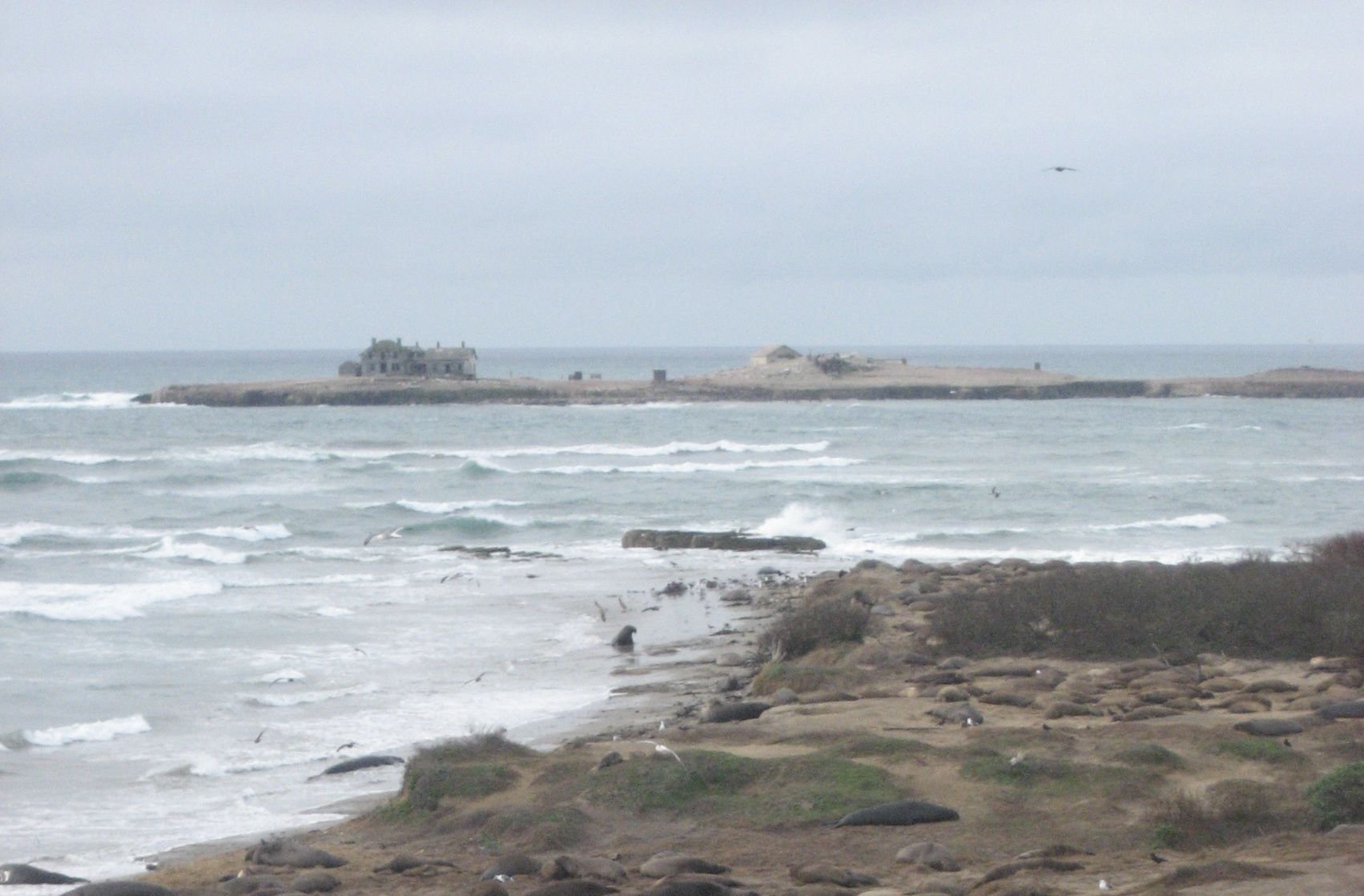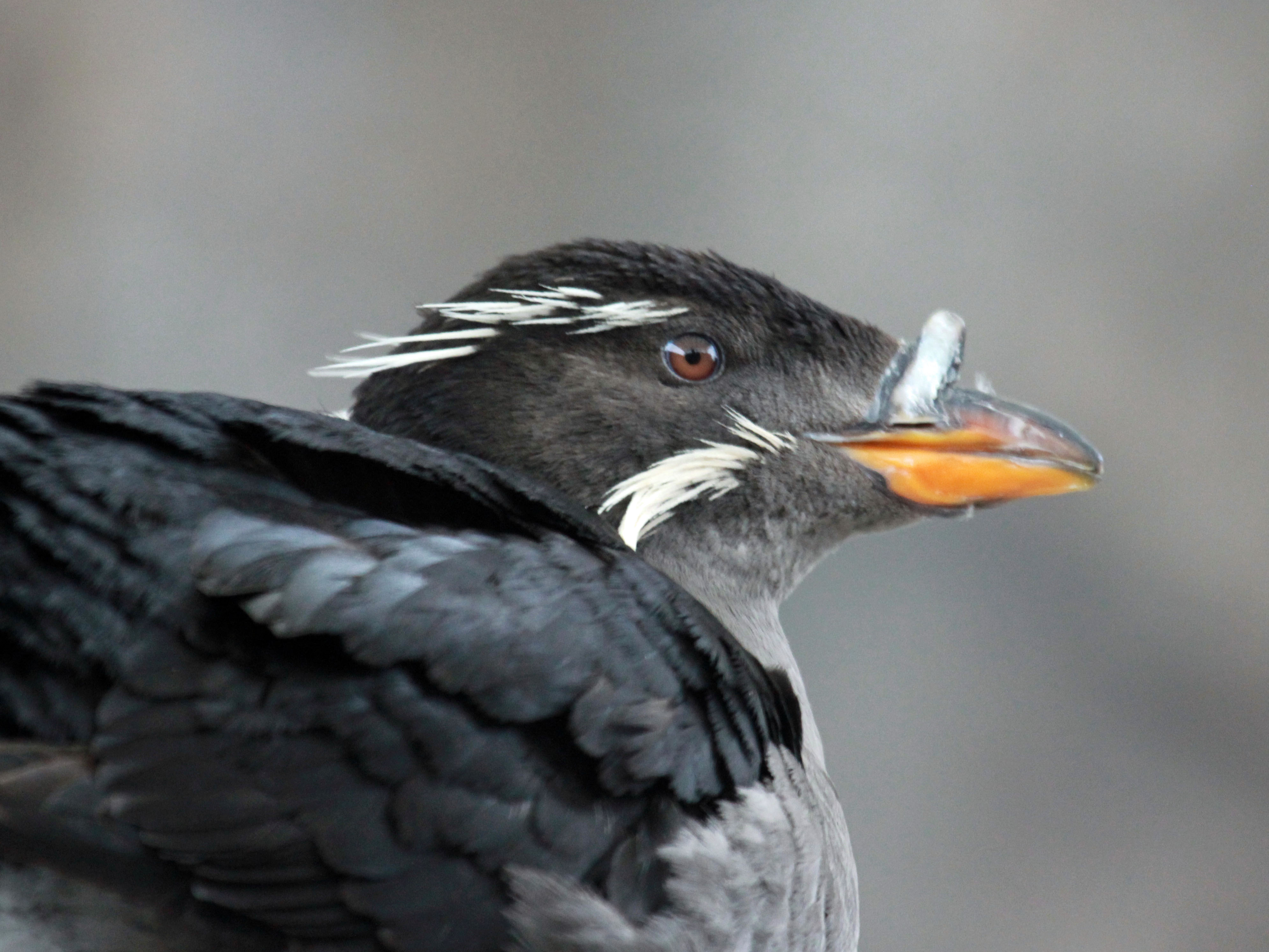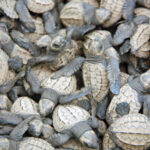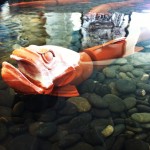
Researchers and conservationists are giving some seabirds an extreme home makeover on Año Nuevo Island (photo: Erin Loury)
On a little island off the coast of central California, researchers, conservationists and artists are teaming up to help some threatened sea birds raise their next generation. The helping hand comes in the form of some stylish new housing.
The Rhinoceros Auklet is a small seabird that researchers call the “the penguin of the North Pacific.” When it comes to setting up shop, these seabirds have some special needs. They only nest on islands, safe from the predators they would encounter on the mainland, and they dig those nests in the ground, burrowing long tunnels into the topsoil.
On Año Nuevo Island, soil erosion threatens some prime seabird real estate. A combination of human use, dry summers, heavy storms, and trampling sea lions and pelicans sloughed five feet of topsoil from the island in the 1990s. Without stable soil, the burrows can blow away or collapse and kill the chick inside. To top it off, Rhinoceros Auklets only raise one chick a year.
That’s where a little human engineering comes in to play.
The Año Nuevo Island Restoration project, headed by California State Parks, the non-profit Oikonos and Go Native Inc., is giving the island a little TLC to make it a better bird habitat. In addition to planting 10,000 native plants to stabilize the soil, the team found a creative way to give the birds a boost in the nesting department.
Students at the California College of the Arts in San Francisco, instructed by ceramicist Nathan Lynch and Rebar designer Matthew Passmore, crafted 90 ceramic burrows that the team buried in the soil. The burrows consist of a long tube that curves at the end like the crook of a pipe. The shape mimics the style of burrows that Rhinoceros Auklets construct for themselves, with a bendy bit serving as a place to tuck their chicks out of the light.
The burrows create a solid place for the birds to nest without fear of collapsing tunnels. They also have a handy little lid over the nesting area that researchers can lift to check in on the birds. Once they know a nesting pair is incubating an egg, they won’t disturb them until they estimate they egg is ready to hatch.
The birds have been warming up to their sturdy new digs. After the first burrows were installed in 2010, a single pair used one to successfully raise a chick. This year, 33 pairs of auklets cozied up to the new burrows. It’s no wonder the team dubs these ceramic nests things like “The Love Shack.”
You can read a great description about the project, and follow their progress online. And just for kicks, another recent of example of crafters giving seabirds a lift: knitters make sweaters for the oil-splashed penguins of New Zealand.








Aww, “trampling sea lions”…the poor birds. I liked the happy ending though :)
What a great story. I didn’t even know we had auklets nearby. Geesh.